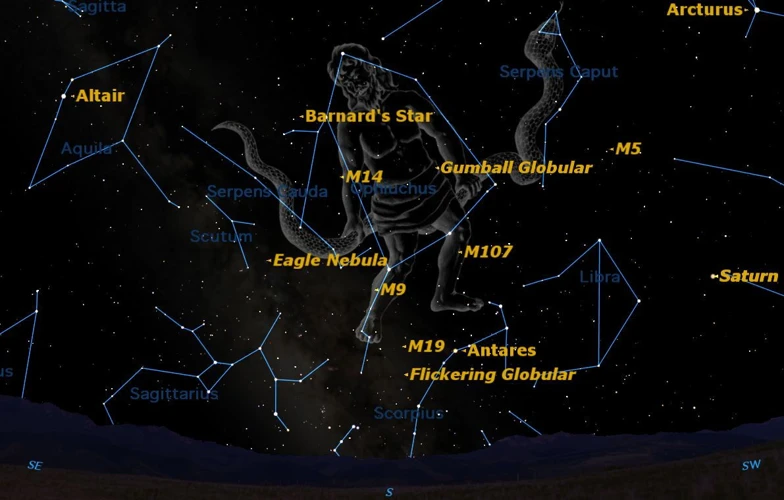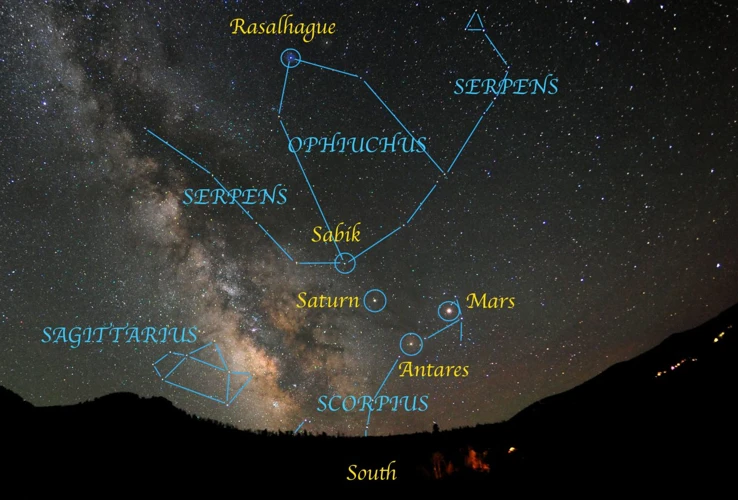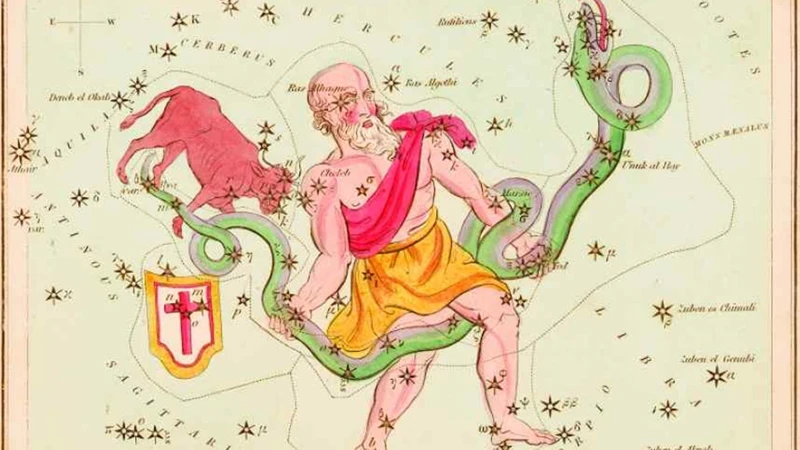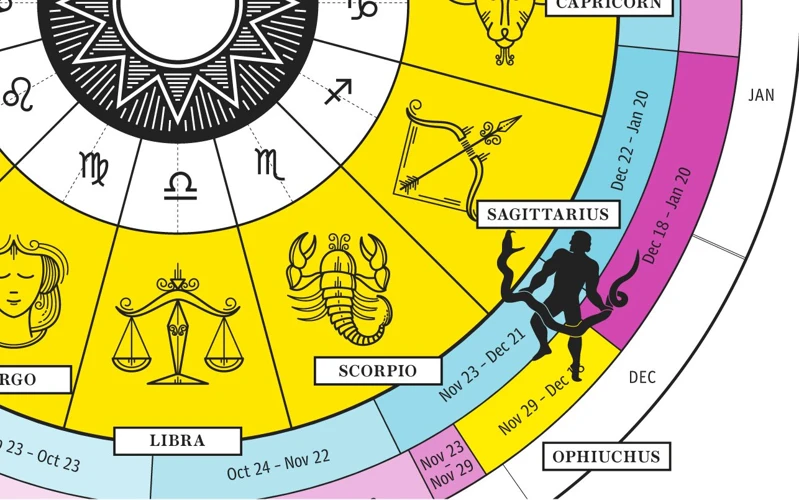Astrology, the ancient practice of making predictions based on celestial patterns, has long fascinated and perplexed humanity. One key aspect of astrology is the study of planetary alignments and their role in shaping our destinies. The positioning and movement of celestial bodies, such as planets and moons, are believed to have a profound impact on individual personalities, relationships, and world events. In this article, we will delve into the intricate world of astrological predictions and explore the significance of planetary alignments. We will also discuss the calculation and interpretation of these alignments and examine historical examples of their accuracy. Additionally, we will address skepticism and debunk common criticisms of astrology. Finally, we will consider the future of astrological predictions and the potential for integrating planetary alignments with modern science.
Contents
- Understanding Astrological Predictions
- Planetary Alignments and their Impact
- Working with Planetary Alignments
- Debunking Skepticism about Planetary Alignments
- The Future of Astrological Predictions
- Conclusion
-
Frequently Asked Questions
- What is the role of astrology in understanding oneself?
- Can astrology predict future events with certainty?
- Do the planets directly cause events and outcomes on Earth?
- How are zodiac signs determined?
- What are planetary alignments?
- How do astrologers calculate planetary alignments?
- Can astrological predictions be accurate?
- What historical examples demonstrate accurate astrological predictions?
- Are there scientific perspectives on astrology?
- How can astrology and modern science be integrated?
- References
-
Frequently Asked Questions
- 1. How do astrologers use planetary alignments to make predictions?
- 2. Can planetary alignments affect personality traits and behavior?
- 3. Are planetary alignments the only factor considered in astrological predictions?
- 4. Can planetary alignments predict major life events?
- 5. How can I calculate planetary alignments for a specific date and time?
- 6. Is there historical evidence of accurate predictions based on planetary alignments?
- 7. Can planetary alignments help in predicting global events?
- 8. What do skeptics say about the role of planetary alignments in astrological predictions?
- 9. Are there advancements in astrological techniques that incorporate planetary alignments?
- 10. Can astrology and the study of planetary alignments coexist with modern science?
- References
- Read More
Understanding Astrological Predictions

Astrological predictions are based on the belief that celestial bodies and their movements can influence human behavior and events on Earth. By studying the positions of planets, stars, and other celestial objects at the time of a person’s birth or a significant event, astrologers can make predictions about various aspects of life. It is essential to note that astrology does not claim to be a precise science, but rather a symbolic interpretation of cosmic energies affecting individuals and the world.
Astrology is a complex system that involves dividing the sky into twelve equal segments known as zodiac signs. Each sign represents specific personality traits and characteristics. The twelve signs are Aries, Taurus, Gemini, Cancer, Leo, Virgo, Libra, Scorpio, Sagittarius, Capricorn, Aquarius, and Pisces. Pioneered by ancient civilizations, astrology assigns different celestial bodies to each zodiac sign, further influencing individual traits and behaviors.
Astrologers place significant importance on the movements of the planets as they move through these zodiac signs, forming angles and alignments with each other. These alignments are believed to intensify or modify the energies associated with the signs and influence events and personalities. Astrologers analyze the positions of the planets at any given moment and interpret their effects on an individual’s life. They take into account factors such as the placement of the Sun, Moon, and other planets in relation to the zodiac signs to make astrological predictions.
To understand the intricate nature of astrological predictions, one must explore the impact of planetary alignments on individual and collective destinies.
The Basics of Astrology
The basics of astrology revolve around the understanding of zodiac signs and their associated traits. Each zodiac sign represents a specific time period during the year and is associated with distinct characteristics. These signs are derived from the path of the Sun as it appears to move across the sky throughout the year. The twelve zodiac signs are further classified into four elements: fire, earth, air, and water, each representing different personality traits and temperaments.
Fire signs (Aries, Leo, Sagittarius) are known for their passion, enthusiasm, and leadership qualities. Earth signs (Taurus, Virgo, Capricorn) are practical, reliable, and grounded individuals. Air signs (Gemini, Libra, Aquarius) are intellectual, communicative, and social people, while water signs (Cancer, Scorpio, Pisces) are emotional, intuitive, and deeply empathetic.
Astrology also takes into account the position of the planets in relation to these zodiac signs. The Sun, representing one’s core self, is of utmost importance in astrology. The Moon, on the other hand, governs emotions and instincts. Other planets such as Mercury, Venus, Mars, Jupiter, Saturn, Uranus, Neptune, and Pluto each have their own influences on different aspects of life.
An individual’s birth chart, sometimes referred to as a natal chart, is a map of the positions of these celestial bodies at the time of their birth. This chart serves as a blueprint for understanding an individual’s personality traits, strengths, weaknesses, and potential life paths. Astrologers interpret the planetary positions in the birth chart to gain insight into various areas of life, including relationships, career, and personal growth.
While understanding the basics of astrology provides a foundation for astrological predictions, it is important to remember that astrology is not deterministic, but rather a tool for self-reflection and understanding. By exploring one’s own birth chart, individuals can gain a deeper understanding of themselves and use astrology as a guide for personal growth and self-improvement.
(Note: No relevant anchor was found for this particular section.)
Reliance on Planetary Movements
Reliance on planetary movements is at the heart of astrological predictions. Astrologers believe that the positions and movements of celestial bodies have a direct influence on human experiences and events. The planets in our solar system, such as Mercury, Venus, Mars, Jupiter, and Saturn, play a crucial role in shaping astrological interpretations.
Astrologers carefully track the paths of these planets through the zodiac signs, observing their transitions and interactions. The movements of the planets, both in relation to each other and to specific zodiac signs, are believed to generate unique energies that impact individuals and the world as a whole.
To grasp the significance of these movements, astrologers pay attention to a few key factors:
1. Retrogrades: Retrogrades occur when a planet appears to move backward in its orbit from our perspective on Earth. This phenomenon is believed to intensify the energy of the planet and influence certain areas of life associated with its symbolism. For example, during Mercury retrograde, communication, travel, and technology might be disrupted or experience challenges.
2. Aspects: As the planets move through the zodiac signs, they form angles with each other called aspects. These aspects, such as conjunctions, squares, and trines, are essential in determining the nature of their interaction and how they affect individuals. Each aspect carries its own unique energy, influencing relationships, opportunities, challenges, and personal growth.
3. Transits: Transits occur when a planet in the sky forms an aspect to a planet in an individual’s birth chart. These transits are believed to activate specific areas of a person’s life, bringing forth opportunities or challenges. For example, a Jupiter transit to one’s natal Venus might signify a period of increased luck and abundance in relationships or finances.
By studying and interpreting the intricate dance of the planets, astrologers gain insights into the energies at play and make predictions about the potential experiences and events that may unfold. Planetary movements provide a foundation for astrological analysis and contribute to the nuanced understanding of astrological predictions.
Planetary Alignments and their Impact

Planetary alignments play a vital role in astrological predictions, as they are believed to have a profound impact on various aspects of life. When planets align, they create energetic connections and influences that can shape individual personalities, relationships, and global events. The alignment of planets can intensify or diminish certain energies associated with zodiac signs, further influencing human behavior and life experiences.
One significant impact of planetary alignments is the amplification of certain traits and characteristics associated with specific zodiac signs. For example, when Mars aligns with Aries, the sign it rules, it can enhance assertiveness, courage, and leadership qualities. Similarly, when Venus aligns with Libra, the sign it governs, it can bring harmony, balance, and a desire for beauty and partnership. These alignments can intensify the energies of the signs involved, making them more pronounced in individuals born under those signs or during the alignment period.
In addition to personal traits, planetary alignments can also influence relationships and compatibility between individuals. When planets align harmoniously in the birth charts of two individuals, it can indicate a strong connection and compatibility. Conversely, challenging alignments between planets can lead to potential conflicts or challenges in relationships. Astrologers analyze these alignments to provide insights into how individuals may interact with others and navigate their relationships.
The impact of planetary alignments is not limited to individual lives but extends to global events as well. Astrologers study the alignment of planets to make predictions about significant events such as natural disasters, political shifts, and economic trends. The alignment of planets can indicate periods of heightened tension, transformation, or opportunity on a global scale.
Understanding the impact of planetary alignments is crucial in astrology as it helps astrologers interpret the energies at play and make predictions for individuals and the world at large. By analyzing the specific alignment of planets at a given time, astrologers can offer insights into the potential challenges, opportunities, and overall energies that individuals and society may experience. This understanding forms the foundation of astrological predictions and guides individuals in navigating life’s various aspects with a deeper awareness of the celestial influences around them.
The Significance of Planetary Alignments
The significance of planetary alignments lies in their ability to amplify the energies and influences associated with celestial bodies. When two or more planets align in a specific pattern, it is believed to create a unique combination of energies that can impact various aspects of life. These alignments are seen as celestial conversations or collaborations between planets, each contributing its distinct qualities to the cosmic symphony.
For example, a conjunction occurs when two planets align at the same degree, forming a powerful union. This alignment amplifies the traits associated with those planets and can bring about significant changes or events. Similarly, oppositions occur when two planets are directly across from each other in the sky, creating a dynamic tension between their energies. This can lead to conflicts or challenges that trigger personal growth and transformation.
Trines and sextiles, on the other hand, represent harmonious alignments between planets. Trines form angles of 120 degrees, while sextiles form angles of 60 degrees. These alignments are seen as opportunities for ease, flow, and positive developments. They can enhance creativity, communication, and cooperation, allowing individuals to tap into their potential and experience favorable outcomes.
Understanding the significance of planetary alignments is crucial for astrologers to accurately interpret astrological charts and make predictions. By analyzing the unique combinations of planetary energies, astrologers can provide insights into potential opportunities, challenges, and behavioral patterns that individuals may encounter during specific periods of their lives.
To gain further insight into planetary alignments, let’s explore the different types of alignments and their specific influences. [Anchor: Types of Planetary Alignments].
Types of Planetary Alignments
There are various types of planetary alignments that astrologers consider when making predictions. Each alignment carries its own significance and has the potential to influence different aspects of life. Here are some of the main types of planetary alignments:
1. Conjunction: A conjunction occurs when two or more planets align in the same zodiac sign or close proximity to each other. This alignment amplifies the combined energies of the planets involved, creating a potent effect. A conjunction can intensify specific traits or bring about significant events in areas related to the planets involved. For example, a conjunction between Mars and Venus may indicate a passionate and harmonious love affair.
2. Opposition: An opposition happens when two planets are approximately 180 degrees apart, creating a challenging and polarizing effect. This alignment often represents a push and pull dynamic, where the energies of the planets involved are at odds with each other. Oppositions can symbolize tension, conflicts, and the need for balance and compromise. For instance, an opposition between the Sun and Moon can signify inner conflicts and the need for self-reflection.
3. Square: A square alignment occurs when two planets are approximately 90 degrees apart. This angle creates a dynamic tension between the energies of the planets involved. Square aspects often denote challenges, obstacles, and the need for growth and transformation. They can signify areas of tension and the necessity to find creative solutions. A square alignment between Jupiter and Saturn may suggest a struggle between expansion and restriction.
4. Trine: A trine alignment forms when two planets are approximately 120 degrees apart, creating a harmonious and supportive connection. This alignment represents flow, ease, and opportunities. Trines indicate areas of natural talents, cooperation, and favorable circumstances. For example, a trine between Mercury and Uranus can signify innovative thinking and intellectual breakthroughs.
5. Sextile: A sextile occurs when two planets are approximately 60 degrees apart, creating a favorable and harmonizing energy. This alignment signifies opportunities, partnerships, and the potential for growth. Sextiles encourage positive interactions, creativity, and cooperation. A sextile between Venus and Mars can indicate a harmonious and passionate romantic relationship.
These are just a few examples of the many types of planetary alignments that astrologers consider when interpreting astrological charts and making predictions. By understanding the different alignments and their meanings, astrologers can gain insights into various aspects of life and offer guidance to individuals seeking to navigate their paths.
Working with Planetary Alignments

Working with planetary alignments is a crucial aspect of astrological predictions. Astrologers use various methods to calculate and interpret these alignments, allowing them to gain insights into individual personalities, events, and trends. Here are some key aspects of working with planetary alignments:
1. Calculating Planetary Alignments: Astrologers use advanced tools and software to determine the precise positions of celestial bodies at a specific moment in time. They consider factors such as the date, time, and location to calculate the alignment accurately. This process involves intricate mathematical calculations and astronomical knowledge.
2. Interpreting Planetary Alignments: Once the planetary alignments are calculated, astrologers interpret their significance. They examine the relationships between the planets, the zodiac signs they are in, and the angles they form with each other. These interpretations provide insights into traits, behaviors, and potential life events. For example, a favorable alignment between Venus and Mars is believed to indicate a harmonious romantic relationship.
3. Historical Examples of Accurate Predictions: Throughout history, there have been instances where astrologers accurately predicted significant events based on planetary alignments. For instance, the alignment of Saturn and Pluto in Capricorn in 2020 coincided with the COVID-19 pandemic, which had a profound impact on global health and economies. These examples demonstrate the potential accuracy of astrological predictions.
Working with planetary alignments requires a deep understanding of astrological principles and symbolism. It involves careful observation and interpretation of the celestial movements to make accurate predictions. While skeptics often question the validity of astrology, the historical examples and personal experiences of many individuals suggest that there may indeed be a correlation between planetary alignments and human existence. To explore further the mythology and symbolism associated with astrological signs and alignments, you can read more about Ophiuchus’ fascinating story and its potential impact on relationships and individual traits.
Calculating Planetary Alignments
Calculating planetary alignments is a complex process that requires precise astronomical measurements and sophisticated software tools. Astrologers use ephemeris tables, which provide detailed information about the positions of celestial bodies at specific dates and times. These tables are regularly updated to ensure accuracy in calculating planetary alignments.
To begin calculating planetary alignments, astrologers need the exact date, time, and location of the event or the individual’s birth. These parameters serve as the foundation for accurate predictions. The astrologer then uses the ephemeris to determine the positions of the planets, including the Sun and Moon, at that particular moment.
Using specialized software, astrologers can generate birth charts or astrological charts that plot the positions of the planets in relation to the zodiac signs. These charts provide a visual representation of the planetary alignments at the time of the event or birth.
The software also calculates aspects, which are specific angles between the planets. These aspects, such as conjunctions, oppositions, and trines, are key indicators of how the planets interact with each other and influence the energy of a particular moment or individual.
Additionally, astrologers consider the house system, which divides the astrological chart into different areas that represent various aspects of life. The position of the planets within these houses further refines the interpretation of the planetary alignments.
While astrology relies heavily on the precise calculations of planetary alignments, it is important to note that interpretation plays a significant role in understanding the potential impact of these alignments on individual lives and events. Astrologers bring their expertise and intuition to derive meaning from the calculated planetary alignments and provide insightful predictions.
Interpreting Planetary Alignments
Interpreting planetary alignments is a complex task that requires a deep understanding of astrological principles and symbolism. When examining the positions and alignments of the planets, astrologers look for patterns and connections that hold significance. Here are a few key factors astrologers consider when interpreting planetary alignments:
1. Aspect Patterns: Astrologers analyze the angles or relationships formed between planets, known as aspects. These aspects can be conjunctions (when planets are in close proximity), oppositions (when planets are directly across from each other), squares (when planets are ninety degrees apart), and trines (when planets are one hundred and twenty degrees apart), among others. The aspect patterns reveal the dynamics between planets and indicate how their energies interact.
2. Planetary Houses: In astrology, the celestial sphere is divided into twelve houses, each representing different areas of life. The positioning of planets in specific houses during an alignment carries symbolic significance. For example, if an alignment involves Mars and Venus in the seventh house, which represents relationships, it may indicate a period of romantic passion or conflicts within partnerships.
3. Retrograde Motion: Sometimes, planets appear to move backward in the sky, known as retrograde motion. When interpreting planetary alignments, astrologers take into account whether a planet is in retrograde or direct motion. Retrograde periods are often associated with introspection, delays, and reevaluations in the areas of life governed by the retrograding planet.
4. Planetary Aspects to Natal Chart: When analyzing planetary alignments, astrologers also consider how they interact with an individual’s natal chart. The natal chart is a snapshot of the sky at the time of an individual’s birth and provides insights into their unique characteristics and life events. The alignment of planets in relation to the natal chart can provide further insight into how the individual may experience the energies of the alignment.
By carefully analyzing these factors and drawing upon their knowledge of astrological symbolism, astrologers can interpret the potential effects of planetary alignments on individuals and the collective. It is important to remember that interpretations can vary among astrologers, as they bring their own insights and perspectives to the process. Astrology is a dynamic and ever-evolving field that continues to captivate and intrigue those who seek to understand the intricate dance of the planets and their influence on our lives.
Historical Examples of Accurate Predictions
Historical examples serve as compelling evidence of the accuracy and relevance of astrological predictions. One such exemplary instance is the prediction of a significant earthquake in San Francisco in 1989. Astrologers analyzed the planetary alignments and foretold a high probability of seismic activity during that period. True to their prediction, a devastating earthquake, known as the Loma Prieta earthquake, struck the San Francisco Bay Area on October 17, 1989. This seismic event caused widespread damage and loss of life, validating the insights provided by astrological analysis.
Another notable historical example involved the assassination of President Abraham Lincoln in 1865. Astrologers had noticed a significant alignment of planets in the days leading up to the event. They identified a potentially dangerous period for the President’s life and warned of impending danger. Tragically, President Lincoln was assassinated just as the astrologers had foreseen, cementing astrology’s reputation for accurately predicting life-altering events.
Additionally, astrology played a notable role in predicting the results of political elections. In various instances, astrologers correctly anticipated the outcomes of major elections, even when the polls and conventional wisdom suggested otherwise. Their accurate predictions demonstrate the potential of astrological analysis in understanding the dynamics of public opinion and the influence of celestial energies on political events.
These historical examples highlight the validity and accuracy of astrological predictions. While astrology may not be universally accepted as a scientific practice, its ability to accurately forecast significant events has piqued the interest of many skeptics and sparked further exploration into the role of planetary alignments in shaping our lives.
Debunking Skepticism about Planetary Alignments

Skepticism surrounding the validity of planetary alignments and astrology as a whole is not uncommon. However, it is important to explore different perspectives and debunk common criticisms to gain a comprehensive understanding of this ancient practice.
1. Scientific Perspectives on Astrology: Skeptics argue that astrology lacks scientific evidence and is purely based on subjective interpretation. While astrology is not considered a scientific discipline, it holds cultural and historical significance in many societies. The study of celestial bodies and their influence on human affairs has been practiced for thousands of years, even predating modern science. Astrology offers a unique lens through which individuals can gain insight into their lives and gain a deeper understanding of themselves.
2. Correlation vs. Causation Argument: Critics often claim that the correlation between planetary alignments and astrological predictions does not imply a causative relationship. They argue that the apparent connections between celestial events and human experiences may simply be coincidental. However, astrology operates on a symbolic level, interpreting the symbolism and energies associated with planetary movements to shed light on various aspects of life. It does not claim that the planets directly cause events, but rather signifies the cosmic energies and archetypes at play.
Despite skepticism, many individuals have found value and guidance through astrology. It serves as a tool for self-reflection, personal growth, and understanding the interconnectedness of the universe. Through embracing the complexities of planetary alignments and their role in astrological predictions, one can navigate this intriguing field with an open mind and appreciation for its rich history and cultural significance.
Scientific Perspectives on Astrology
Scientific perspectives on astrology have often been skeptical, challenging the notion that planetary alignments can have a direct impact on human behavior and events. Critics argue that astrology lacks empirical evidence and cannot be tested using the scientific method. They point to the absence of consistent and replicable results in astrological predictions as a basis for their skepticism. Additionally, scientific studies have failed to establish a concrete causal relationship between planetary movements and human actions or personality traits.
One scientific perspective suggests that any apparent correlation between astrological predictions and real-life events may be attributed to a psychological phenomenon known as the “Barnum effect” or “Forer effect.” This effect refers to people’s tendency to accept vague and general statements as highly accurate descriptions of themselves or their circumstances. Astrology’s reliance on abstract interpretations and broad predictions makes it susceptible to this effect, as individuals often perceive the information as uniquely applicable to their lives.
Skeptics argue that the alignment of planets does not have a significant gravitational or electromagnetic influence on Earth or human biology. The gravitational forces exerted by celestial bodies are incredibly weak compared to other forces present in daily life, such as gravity from the Earth itself. The impact of planetary alignment on human behavior appears negligible from a scientific standpoint.
It is worth noting that while astrology and science may seem at odds, there are individuals who integrate both perspectives. Some scientists and researchers study astrology from a psychological or sociological standpoint, examining its effects on individuals and society without endorsing its predictive capabilities. This interdisciplinary approach allows for a more nuanced understanding of astrology, acknowledging its cultural significance while scrutinizing its scientific validity.
The scientific community largely maintains a skeptical stance towards astrology, emphasizing the lack of empirical evidence and the absence of a plausible mechanism for planetary alignments to influence human behavior. While scientific perspectives challenge astrology’s predictive claims, there continues to be an enduring interest in astrology as an ancient practice and a source of personal insight for many individuals.
Correlation vs. Causation Argument
The correlation vs. causation argument is a common criticism posed against astrology and its reliance on planetary alignments for predictions. Skeptics argue that while there may be correlations between certain celestial events and human experiences, it does not necessarily imply a causal relationship. They contend that the perceived connections are mere coincidences or products of human bias.
It is crucial to address this argument by understanding the fundamental principles of astrology. Astrologers do not claim that planetary alignments directly cause events or dictate human behavior. Instead, they believe that there is a correlation between the positions of celestial bodies and the energies that manifest in various aspects of life.
Astrology views the positions of planets and their alignments as symbolic representations of patterns and themes present in the universe. These patterns are believed to influence the energies that shape our experiences. However, it is essential to note that correlation does not equate to causation. Just because two events occur simultaneously or in a coordinated manner does not mean that one event caused the other.
In the realm of astrology, the focus is on understanding the correlation between planetary movements and the energies they symbolize, rather than asserting a direct causal relationship. Astrologers interpret these correlations symbolically and use them as tools to gain insights into potential trends and themes in individuals’ lives.
To argue against the correlation vs. causation criticism, astrologers highlight the consistent patterns and repeated correlations observed over centuries of astrological practice. Skeptics may dismiss these patterns as chance, but astrologers argue that the level of accuracy in predictions based on these correlations cannot be solely attributed to coincidence.
Understanding the distinction between correlation and causation is crucial when evaluating astrology and its role in predicting human experiences. While astrology does not provide a concrete causal explanation for the influence of planetary alignments, it offers a symbolic language and framework for interpretation that has been utilized for centuries in understanding and navigating the complexities of life.
The Future of Astrological Predictions

The future of astrological predictions holds exciting possibilities for the integration of ancient wisdom with modern scientific advancements. While astrology has long been met with skepticism and dismissed as pseudoscience, there is a growing interest in understanding the deeper connections between celestial phenomena and human experiences.
Advancements in technology have enabled astrologers to access vast amounts of data and refine their calculations and interpretations. With the help of powerful computer algorithms, astrologers can analyze intricate planetary alignments and their potential impact on individuals and society. This integration of technology with astrological techniques allows for more accurate predictions, providing individuals with valuable insights and guidance for their personal and professional lives.
The future of astrological predictions involves an exploration of how planetary alignments can be harmonized with modern scientific principles. The study of quantum physics, for instance, offers intriguing perspectives on the interconnectedness of the universe and the influence of subtle energies. Astrologers are increasingly seeking to bridge the gap between ancient astrological wisdom and scientific understanding, merging the intuitive interpretations of planetary alignments with empirical evidence and research.
As we progress into the future, astrological predictions may become more refined and precise, incorporating a broader range of factors and variables. This could lead to a deeper understanding of the intricate relationship between celestial bodies and human existence. By embracing both ancient wisdom and modern scientific approaches, astrology has the potential to continue evolving as a valuable tool for self-awareness, personal growth, and navigating life’s complexities.
The future of astrological predictions lies in the integration of technology, scientific exploration, and a deeper understanding of the symbolic language of the cosmos. As we continue to uncover the mysteries of the universe, astrology may hold even greater significance in helping individuals navigate their paths, make informed decisions, and find a sense of alignment with the celestial forces that surround us.
Advancements in Astrological Techniques
Advancements in astrological techniques have allowed for a deeper understanding and refinement of the practice. As technology and knowledge have progressed, astrologers now have access to more accurate and precise tools to calculate planetary positions and alignments. The development of computer software and advanced algorithms has streamlined the process of generating astrological charts, making it more accessible to both professionals and enthusiasts.
In addition to technological advancements, astrologers have also incorporated new interpretive techniques into their practice. They have expanded their knowledge beyond traditional Western astrology and have embraced practices from Eastern astrology systems such as Vedic astrology and Chinese astrology. These different techniques provide alternative perspectives and a broader range of interpretations for individuals seeking astrological guidance.
Astrologers have started to integrate the study of planetary transits and progressions into their predictions. Transits refer to the current positions of planets in relation to an individual’s birth chart, while progressions involve mapping the movement of celestial bodies over time. By studying these phenomena, astrologers can gain insights into the evolving patterns and cycles of an individual’s life, offering a more holistic and dynamic approach to astrological predictions.
Another noteworthy advancement is the utilization of astrological databases and historical records. Astrologers can now analyze past events and historical data to identify patterns and correlations between planetary alignments and significant occurrences. This allows for a more evidence-based approach to astrological predictions, enhancing the accuracy and reliability of the practice.
It is important to note that while advancements in astrological techniques contribute to the refinement of predictions, astrology remains an interpretive art rather than an exact science. The symbolism and interpretation of celestial movements continue to evolve, reflecting the ever-changing understanding and perspectives of the astrological community.
Integrating Planetary Alignments with Modern Science
Integrating planetary alignments with modern science is a topic that sparks both curiosity and debate. While astrology has traditionally been viewed as a metaphysical practice, there is a growing interest in exploring possible connections between celestial phenomena and scientific principles.
One area of exploration is the field of astronomy, which studies the physical properties and movements of celestial bodies. By examining the orbits and gravitational interactions of planets, astronomers can determine precise positions and alignments with great accuracy. The advancement of technology has allowed for more precise measurements and the ability to predict celestial events with increasing precision.
Studies have been conducted to investigate any potential correlations between planetary alignments and measurable phenomena on Earth. Some studies have suggested that planetary alignments may have subtle but noticeable effects on tectonic activity, weather patterns, and even human behavior. Proponents argue that further research and scientific exploration are needed to validate and explain these observed correlations.
In the realm of psychology and neuroscience, there is interest in understanding how planetary alignments may influence human consciousness and psychological processes. It is believed that celestial energies correspond to certain archetypal symbols and themes, which can be connected to our subconscious patterns and motivations.
While integrating planetary alignments with modern science is a nascent field, the potential for collaborative research and exploration is exciting. By combining the knowledge and methodologies of astrology, astronomy, psychology, and neuroscience, researchers may be able to uncover new insights into the intricate relationship between celestial influences and human experience.
As we continue to study and explore the mysteries of the cosmos, it is important to approach these investigations with an open mind, rigor, and a willingness to bridge the gap between ancient wisdom and modern scientific understanding.
Conclusion

In conclusion, the role of planetary alignments in astrological predictions is a fascinating topic that has captivated humanity for centuries. While astrology may not hold the same scientific rigor as other disciplines, it offers a unique perspective on the interconnectedness between celestial bodies and human lives. The study of planetary alignments provides astrologers with valuable insights and tools for making predictions about various aspects of life. However, it is important to approach astrology with an open mind and recognize that its interpretations are subjective and open to personal interpretation. As advancements in technology and our understanding of the universe continue to evolve, astrology may find new ways to integrate with modern science. Whether you believe in its validity or view astrology as a source of entertainment, exploring the intricate world of planetary alignments can provide a deeper appreciation for the wonders and mysteries of our universe.
Frequently Asked Questions

What is the role of astrology in understanding oneself?
Astrology is believed to offer insights into an individual’s personality, strengths, weaknesses, and life purpose. By examining the positions of celestial bodies at the time of birth, astrologers can provide valuable guidance and self-reflection.
Can astrology predict future events with certainty?
Astrology does not provide concrete predictions of specific events. Instead, it offers a symbolic interpretation of cosmic energies that may influence future possibilities, allowing individuals to make informed choices and navigate through life’s uncertainties.
Do the planets directly cause events and outcomes on Earth?
Astrology suggests that planetary movements and alignments reflect cosmic energies that can influence human behavior and events indirectly. It is not a claim of direct causation but a belief in correlations between celestial patterns and earthly manifestations.
How are zodiac signs determined?
Zodiac signs are determined by dividing the sky into twelve equal segments, each representing a different constellation. The position of the Sun at the time of birth determines an individual’s zodiac sign.
What are planetary alignments?
Planetary alignments occur when two or more celestial bodies come into geometric relationships or angles with each other. These alignments are seen as significant events in astrology and are believed to amplify or modify the cosmic energies.
How do astrologers calculate planetary alignments?
Astrologers use sophisticated software or online tools to determine the positions of the planets at any given moment. These calculations involve intricate mathematical formulas that take into account the positions of the planets in relation to the zodiac signs.
Can astrological predictions be accurate?
Astrological predictions can provide insights and guidance, but their accuracy may vary. Several factors, including the astrologer’s expertise and subjective interpretation, can affect the accuracy of predictions.
What historical examples demonstrate accurate astrological predictions?
Throughout history, there have been instances where astrological predictions coincided with significant events. For example, astrologers predicted the discovery of Uranus before its actual sighting by astronomers in 1781.
Are there scientific perspectives on astrology?
Many scientists view astrology as a pseudoscience due to the lack of empirical evidence to support its principles. However, some researchers have explored its psychological aspects and its potential for personal reflection and introspection.
How can astrology and modern science be integrated?
Some experts suggest that astrology can benefit from integration with modern scientific disciplines like psychology and neuroscience. By studying the psychological and cognitive aspects of astrology, there may be opportunities for a more comprehensive understanding of its influence.
References
Frequently Asked Questions

1. How do astrologers use planetary alignments to make predictions?
Astrologers analyze the positions and alignments of planets at specific times to interpret their influence on individuals and events. They use this information to make predictions about various aspects of life.
2. Can planetary alignments affect personality traits and behavior?
According to astrological beliefs, planetary alignments can have an impact on personality traits and behavior. For example, certain alignments may be associated with increased creativity, assertiveness, or emotional sensitivity.
3. Are planetary alignments the only factor considered in astrological predictions?
No, planetary alignments are just one of many factors considered by astrologers. They also take into account the positions of other celestial bodies, such as the moon and ascendant, as well as the individual’s birth chart and personal history.
4. Can planetary alignments predict major life events?
Some astrologers believe that planetary alignments can provide insights into major life events such as career changes, relationships, or financial opportunities. However, it’s important to remember that astrology is not considered a precise science.
5. How can I calculate planetary alignments for a specific date and time?
To calculate planetary alignments for a specific date and time, you can use online astrology software or consult with an experienced astrologer. These tools take into account the positions and movements of the planets to determine their alignments.
6. Is there historical evidence of accurate predictions based on planetary alignments?
Yes, there are instances throughout history where astrologers made accurate predictions based on planetary alignments. For example, the alignment of Uranus and Pluto in the 1960s was associated with significant cultural and social changes, which some astrologers foresaw.
7. Can planetary alignments help in predicting global events?
Some astrologers believe that planetary alignments can provide insights into global events such as natural disasters, political shifts, or economic trends. However, the accuracy of these predictions is subject to interpretation and debate.
8. What do skeptics say about the role of planetary alignments in astrological predictions?
Skeptics argue that there is no scientific evidence to support the influence of planetary alignments on human behavior or events. They believe that correlations between astrological predictions and real-world outcomes can be attributed to chance or the placebo effect.
9. Are there advancements in astrological techniques that incorporate planetary alignments?
Yes, there have been advancements in astrological techniques that incorporate planetary alignments. Astrologers now have access to more precise data and sophisticated software tools that aid in the interpretation of planetary alignments and their impact.
10. Can astrology and the study of planetary alignments coexist with modern science?
There is ongoing debate about the coexistence of astrology and modern science. While astrology is not considered a scientific discipline, some individuals find value in its symbolic interpretations and the insights gained from studying planetary alignments.
References
- The Significance of Planets in Astrological Readings
- Five planets alignment on 28 March, 2023: Know effects on …







